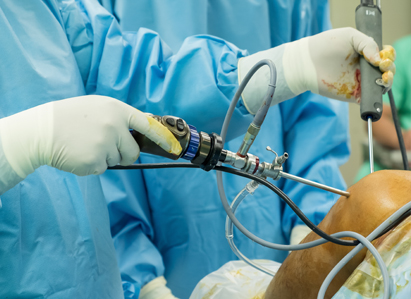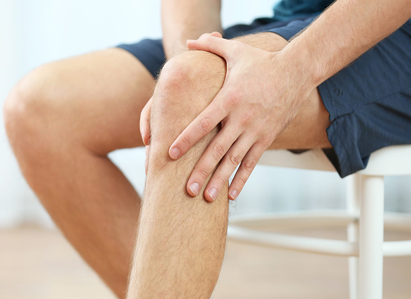Dr. Biplab Dolui
MS (Orthopaedics), AFTS Fellow (Paris), Consultant Arthroscopist, Joint Replacement & Trauma Surgeon
MS (Orthopaedics), AFTS Fellow (Paris), Consultant Arthroscopist, Joint Replacement & Trauma Surgeon
Knee arthroscopy is a surgical technique that can diagnose and treat problems in the knee joint. During the procedure, your surgeon will make a very small incision and insert a tiny camera — called an arthroscope — into your knee. This allows them to view the inside of the joint on a screen. The surgeon can then investigate a problem with the knee and, if necessary, correct the issue using small instruments within the arthroscope.
Arthroscopy diagnoses several knee problems, such as a torn meniscus or a misaligned patella (kneecap). It can also repair the ligaments of the joint. There are limited risks to the procedure and the outlook is good for most patients. Your recovery time and prognosis will depend on the severity of the knee problem and the complexity of the required procedure.
Why Do I Need Knee Arthroscopy?
Your doctor may recommend that you undergo a knee arthroscopy if you’re experiencing knee pain. Your doctor might have already diagnosed the condition causing your pain, or they may order the arthroscopy to help find a diagnosis. In either case, an arthroscopy is a useful way for doctors to confirm the source of knee pain and treat the problem.
Arthroscopic surgery can diagnose and treat knee injuries, including:
• torn anterior or posterior cruciate ligaments
• torn meniscus (the cartilage between the bones in the knee)
• patella that’s out of position
• pieces of torn cartilage that are loose in the joint
• removal of a Baker’s cyst
• fractures in the knee bones
• swollen synovium (the lining in the joint)

What Are the Risks Associated with a Knee Arthroscopy?
There are risks associated with any type of surgery, though they are rare.
Every surgery has the following risks:
• excessive bleeding during the procedure
• infection at the site of the surgery
• breathing difficulties caused by anesthesia
• allergic reaction to anesthesia or other medications administered during surgery
There are also risks specific to a knee arthroscopy, such as:
• bleeding inside the knee joint
• formation of a blood clot in the leg
• infection inside the joint
• stiffness in the knee
• injury or damage to the cartilage, ligaments, meniscus, blood vessels, or nerves of the knee

What Is Recovery Like After a Knee Arthroscopy?
This surgery isn’t very invasive. For most people, the procedure takes less than an hour depending on the specific procedure. You will likely go home on the same day for recovery. You should use an ice pack on your knee and a dressing. The ice will help reduce swelling and minimize your pain.
At home, you should have someone look after you, at least for the first day. Try to keep your leg elevated and put ice on it for a day or two to reduce swelling and pain. You’ll also need to change your dressing. Your doctor or surgeon will tell you when to do these things and for how long. You will probably need to see your surgeon for a follow-up appointment a few days after the procedure.
Your doctor will give you an exercise regimen to follow at home to help your knee recover, or will recommend a physical therapist to see until you’re able to use your knee normally. The exercises are necessary to help restore your full range of motion and to strengthen your muscles. With the proper care, your outlook after having this procedure is excellent.